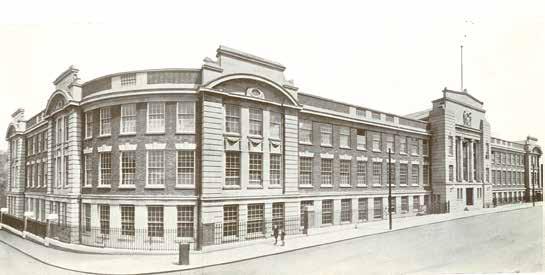
1 minute read
Our history
In the 19th century, institutions including the School of Art and Wolverhampton Mechanics’ Institute and Free Library were established.
Images: (Top) School of Architecture and the Built Environment, Springfield Campus. (Left) The Wolverhampton and Staffordshire Technical College – now known as Wulfruna Building. (Top opposite) WITCH, one of the earliest digital computers in the UK. (Bottom right opposite) Harrison Library.


A teacher training college opened in 1909 which started to shape the University of today. In 1931, the foundation stone of Wolverhampton and Staffordshire Technical College on Wulfruna Street was laid by HRH Prince George. Throughout the 20th century, further expansion in teaching training, engineering, music and other specialisms helped to build the College’s profile.
We branched out to Walsall with the creation of the West Midlands College of Education and housed one of the first digital computers. In 1969, Wolverhampton became one of 30 new polytechnics. Our iconic art and design building, one of the first purpose-built art schools in the UK, was opened in 1970, and nursing education was brought into higher education from hospitals, leading to the creation of the School of Nursing and Midwifery at Walsall Campus.
In 1992, Wolverhampton Polytechnic was granted university status and became the University of Wolverhampton. Throughout the ’90s, the University grew; a campus was opened at Telford and the University of Wolverhampton Science Park opened, strengthening business links in the region.
1996 saw our first international opening in Hong Kong – now partnerships include Cyprus, India, UAE, and more. Recent multi-million pound investments, such as 2020’s new Springfield Campus, have radically enhanced the University’s facilities, enabling us to offer more subjects and opportunities than ever.











